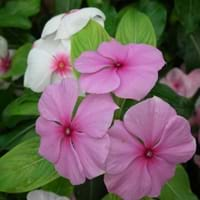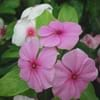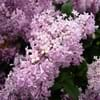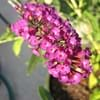Life Span
Perennial
Annual and Perennial
Type
Flowering Plants, Shrubs
Herbaceous Perennial, Herbs
Origin
Madagascar
Europe, Middle East
Types
Purple vinca, Vinca, cherry red, strawberry color
Mentha × piperita 'Candymint', Mentha × piperita 'Citrata', Mentha × piperita 'Crispa'
Number of Varieties
Not Available
Habitat
Subtropical climates, Tropical regions
Wide range of ecological site
USDA Hardiness Zone
4-9
3-7
AHS Heat Zone
12-1
Not Available
Sunset Zone
A1, A2, A3, H1, H2, 1a, 1b, 2a, 2b, 3a, 3b, 4, 5, 6, 7, 8, 9, 10, 11, 12, 13, 14, 15, 16, 17, 18, 19, 20, 21, 22, 23, 24
Not Available
Habit
Clump-Forming
Clump-Forming
Flower Color
Magenta, Pink, Rose
Purple
Flower Color Modifier
Not Available
Bicolor
Fruit Color
Not Available
Non Fruiting Plant
Leaf Color in Spring
Dark Green
Dark Green
Leaf Color in Summer
Dark Green
Green, Dark Green
Leaf Color in Fall
Dark Green
Dark Green, Green
Leaf Color in Winter
Dark Green
Light Green
Leaf Shape
Oval
Ovate elongated
Plant Season
Fall, Spring, Summer, Winter
Spring, Summer
Sunlight
Partial shade
Full Sun, Partial Sun
Type of Soil
Loamy, Sandy, Well drained
Loam
The pH of Soil
Neutral, Slightly Alkaline
Neutral, Slightly Acidic, Slightly Alkaline
Soil Drainage
Well drained
Well drained
Bloom Time
Fall, Spring, Summer
Late Summer, Mid Summer
Tolerances
Drought, Pollution, Salt
Drought
Where to Plant?
Container, Ground, Pot
Container, Ground
How to Plant?
Seedlings, Stem Planting, Transplanting
From Rhizomes, Vegetative Reproduction
Plant Maintenance
Medium
Low
Watering Requirements
Does not require lot of watering, Medium
Requires plenty of water during the growing season
In Summer
Lots of watering
Lots of watering
In Spring
Moderate
Moderate
In Winter
Average Water
Less Watering
Soil pH
Neutral, Slightly Alkaline
Neutral, Slightly Acidic, Slightly Alkaline
Soil Type
Loamy, Sandy, Well drained
Loamy
Soil Drainage Capacity
Well drained
Well drained
Sun Exposure
Partial shade
Partial Sun
Pruning
Prune ocassionally
Remove damaged leaves, Remove dead branches, Remove dead leaves, Requires very little pruning
Fertilizers
All-Purpose Liquid Fertilizer
All-Purpose Liquid Fertilizer
Pests and Diseases
Botrytis Blight, Canker, Crown rot, Pythium rot, Root rot
Red blotch
Plant Tolerance
Drought
Drought
Flower Petal Number
Single
Double
Fragrant Bark/Stem
No
Yes
Foliage Texture
Medium
Coarse
Foliage Sheen
Glossy
Matte
Attracts
Butterflies
Bees
Allergy
Intestinal gas, Nausea, Vomiting
flushing of face, Headache, Heartburn, Sore Throat
Aesthetic Uses
Beautification, Showy Purposes
Not Used For Aesthetic Purpose
Beauty Benefits
Not Available
Maintains teeth healthy
Environmental Uses
Air purification
Prevent Soil Erosion
Medicinal Uses
Chest pain, High blood pressure, Inflammation, Sore throat, Tooth ache, Wounds
Mouth Sores, Pain killer, Vitamin A
Part of Plant Used
Whole plant
Flowers, Leaves
Other Uses
Decoration Purposes, Showy Purposes, Used as Ornamental plant
In toothpaste, Mouth freshner, Used in flavouring curries, teas, used in Indian cuisine in curries
Used As Indoor Plant
Yes
Yes
Used As Outdoor Plant
Yes
Yes
Garden Design
Bedding Plant, Container, Edging
Herb
Botanical Name
Catharanthus roseus
Mentha × piperita
Common Name
Madagascar periwinkle or rosy periwinkle
Peppermint
In Hindi
Periwinkle
पिपरमिंट
In German
Immergrün
Pfefferminze
In French
Pervenche
Menthe poivrée
In Spanish
Bígaro
Mentha × piperita
In Portuguese
Mirta
Hortelã-pimenta
In Polish
Barwinek
Mięta pieprzowa
In Latin
Periwinkle
Peppermint
Phylum
Mollusca
Magnoliophyta
Class
Gastropoda
Magnoliopsida
Order
Geraniales
Lamiales
Family
Apocynaceae
Lamiaceae
Genus
Catharanthus
Mentha
Clade
Not Available
Angiosperms, Asterids, Eudicots
Tribe
Not Available
Mentheae
Subfamily
Not Available
Not Available
Season and Care of Periwinkle and Peppermint
Season and care of Periwinkle and Peppermint is important to know. While considering everything about Periwinkle and Peppermint Care, growing season is an essential factor. Periwinkle season is Fall, Spring, Summer and Winter and Peppermint season is Fall, Spring, Summer and Winter. The type of soil for Periwinkle is Loamy, Sandy, Well drained and for Peppermint is Loam while the PH of soil for Periwinkle is Neutral, Slightly Alkaline and for Peppermint is Neutral, Slightly Acidic, Slightly Alkaline.
Periwinkle and Peppermint Physical Information
Periwinkle and Peppermint physical information is very important for comparison. Periwinkle height is 1.97 cm and width 2.96 cm whereas Peppermint height is 60.00 cm and width 50.00 cm. The color specification of Periwinkle and Peppermint are as follows:
Periwinkle flower color: Magenta, Pink and Rose
Periwinkle leaf color: Dark Green
Peppermint flower color: Purple
- Peppermint leaf color: Dark Green
Care of Periwinkle and Peppermint
Care of Periwinkle and Peppermint include pruning, fertilizers, watering etc. Periwinkle pruning is done Prune ocassionally and Peppermint pruning is done Remove damaged leaves, Remove dead branches, Remove dead leaves and Requires very little pruning. In summer Periwinkle needs Lots of watering and in winter, it needs Average Water. Whereas, in summer Peppermint needs Lots of watering and in winter, it needs Less Watering.





